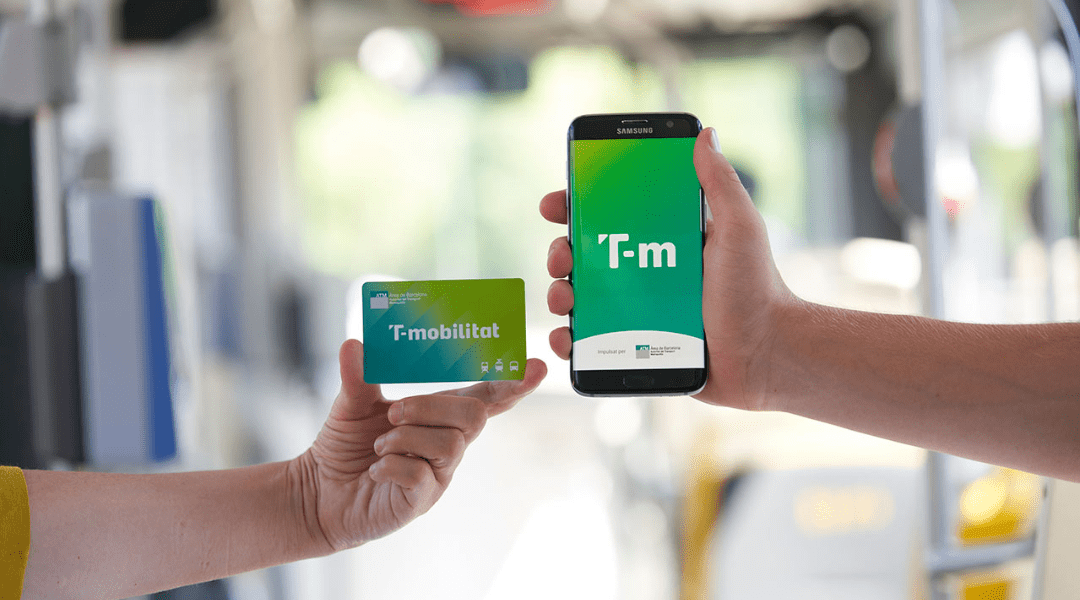What is programmatic advertising and how does it work
Buying advertising space in media is key for any business. Because, of course, if you're not in the right place, what's the point of having the best...
Plan, activate and control media to hit targets with precision.
Turn data into smart decisions with advanced analytics and modeling.
Efficiency, governance and scale for agencies and teams.
![[Ebook] SEO + AI: eBook to Master AI Overviews and GEO](https://www.adsmurai.com/hubfs/MKT%20-%202025/WEB/Resources%20-%20Banners/HeaderEN_Ebook_SEO+AI.png)
[Ebook] SEO + AI: eBook to Master AI Overviews and GEO
Learn how to structure and distribute your content so generative models can understand it, trust it, and reuse it in their answers. A practical guide to compete and appear in AI Overviews and AI-powered assistants.
Discover more
Imagine that traditional outdoor advertising, those static billboards you've been seeing for years, have decided to go digital and transform into digital screens. Yes, that is DOOH.
In recent years, Digital Out-of-Home (DOOH) has emerged as a truly disruptive advertising communication strategy, and we love it! Far from being just a trend, it represents a sophisticated evolution of traditional advertising. Digital Out-of-Home involves outdoor environments, digital screens, and reaching audiences outside their homes.
Discover exactly what DOOH is, its main advertising formats, and why you should include this type of campaign in your digital marketing strategy. Let’s dive in!
TABLE OF CONTENTS
If we talk about trends, we can say that digital out-of-home advertising is constantly evolving. By 2025, spending is expected to grow to €17.38 billion according to a Statista study. Do you still think DOOH advertising doesn’t have an impact?
Between 2025 and 2029, advertising spending will grow at an annual rate of 7.12%. By the time we reach 2029, we will be talking about a €22.88 billion market. That means a lot of screens displaying brand content!
The company Huspy is a great example. They have managed to enter the Spanish proptech market, facing the challenge of increasing brand recognition in the Madrid community. They demonstrated how a DOOH strategy can enhance brand visibility and create a lasting impact in the minds of their target audience.
And to make you feel part of this advertising revolution, we explain the different formats of digital outdoor advertising.
Out-of-Home advertising, or OOH, includes all advertising media found outside the home—traditional advertising. It consists of messages directed at consumers in public places, transportation hubs, highways, commercial spaces, etc.
Within Out-of-Home advertising, we include billboards, signs, ads on urban furniture, and other specific locations such as stadiums or cinemas.
However, as the world has digitalized, so has the outdoor advertising sector. This process led to the digitalization of outdoor advertising, known as DOOH or Digital Out-of-Home Advertising. Take note and get ready to conquer the outdoor world!
Digital Out-of-Home advertising is one of the fastest-growing forms of advertising today. DOOH is essentially traditional outdoor advertising enhanced with AdTech (geolocation, tracking, retargeting, personalization, attribution, and measurement).
And where will you find these digital wonders? Pretty much anywhere you can place a screen—inside elevators while you curse Monday mornings, on giant billboards as you're stuck in traffic, or even on TV screens distracting you while you wait at the dentist. There is no escape!
There are different methods for media buying in DOOH advertising. Let’s explain how programmatic buying works.
This type of advertising is often linked to programmatic advertising. By combining both advertising models, we eliminate the obstacles advertisers face when planning and contracting Out-of-Home spaces with multiple providers individually.
Today, technology allows campaigns to be programmed in near real time, as is the case with all other digital channels. This allows advertisers to reach the right people in the right places at the right time through automation and data-driven decision making.
Aware of this, Huspy wanted to penetrate the Spanish market, not only by boosting its digital strategy, but also by making itself known in a city like Madrid to address its Brand Awareness challenge. From a brand awareness approach, they chose a Digital Out of Home campaign to reach a wider audience and ensure the effectiveness of the campaign. To achieve this, 114 screens were selected across 98 locations, spanning outdoor spaces, metro stations and bus stops. This strategic distribution allowed to impact different segments of the population, ensuring greater visibility and effectiveness.
Programmatic DOOH advertising does not require human intervention during the buying process. Brands can auction their ads on a DSP (Demand Side Platform) and after the response of the SSP (Sell Side Platform) guarantee themselves an advertising space.

To better understand this process, we need to understand the technology that underpins programmatic advertising. Real Time Bidding (RTB) is based on bids and auctions in which advertisers compete with each other to show their ads to specific users. It refers to the online buying and selling of available advertising space through a real-time auction. It is called real-time, because at the moment the exchange is made, it is reflected on the web page, showing the ad.
To manage RTB, the campaign was leveraged through a partnership with Displayce, JCDecaux and Clear Channel, which allowed for greater granularity in targeting and coverage optimization. Also, a time slot segmentation was implemented, ensuring the exposure of the message at strategic times (from 8:00 am to 9:00 pm), when pedestrian traffic and public transport use was highest. The combination of these actors ensured that the message reached the places most frequented by the target audience.
As we have told you, Digital Out-of-Home advertising is based on digital screens and depending on the location we choose, we can significantly enhance the presence of the brand. Within a city there are multiple locations to display a digital ad, but do you know what are the main formats?
In this case we refer to all those screens seen by pedestrians and street traffic, from highway billboards to bus shelters.

We include in this format those screens that are located in relevant environments such as office buildings, shopping malls, gyms, universities and others. For campaigns with specific target audiences, advertisers can benefit from the attention and relevance of this type of screens.
There is not much difference with respect to the previous format. But we differentiate here those screens that are located at the specific point of sale within the stores where a brand's products are sold. For example, in shopping malls, department stores, pharmacies, among others.
Opting for programmatic DOOH advertising has several advantages that you can't afford to miss. First, the programmatic advertising platform will allow you to access all of Digital Out-of-Home's inventory from a single point of access. In fact, you can carry out the entire media buying and selling process from the platform. This factor simplifies the different tasks of launching a digital OOH campaign and will allow even small teams to carry out large actions.
On the other hand, instead of measuring each media of your campaign individually, by opting for programmatic DOOH advertising you will be able to evaluate the effect of your campaign holistically.
Ready to master the world of DOOH? Here are some infallible tricks to make your outdoor digital advertising shine brighter than a billboard in Times Square:
Programmatic DOOH advertising offers the ability to display campaign ads at the time when the target audience is most likely to see them, and this factor greatly increases advertising effectiveness.
In fact, with OOH campaigns, sellers and buyers relied solely on geographic factors (zip codes, streets, stores, etc.) to choose their locations. Today, with data-driven technology, brands can use consumer movement patterns to make more informed decisions when choosing their digital displays for DOOH. Today, to impact target audiences in the right place at the right time, there are several types of targeting: audience, geographic, proximity, day of day and mobile extensions. Adapt your message like an advertising chameleon. Hyper-personalization is the magic word. Make your audience feel that you read their minds.
Forget those dark, dusty corners. Look for the hot spots where people can't avoid seeing you. Main avenues, shopping malls... Become the professional photobomber of the city!
Part of the digital marketer's job is to find strategies that successfully use first-party data to reach the same audience across mobile, video, display and social media. These connections become more complicated when it comes to reaching OOH media.
Technological advances in OOH technology and data management allow brands today to target audiences in the real world. Thus achieving the consumer journey throughout the entire buying process. In this way, and thanks to programmatic DOOH advertising, brands can also reach their audiences, on a large scale, in their natural environment while they are away from home and their devices.
Don't settle for just being seen, make them interact! Integrate QR codes or links that encourage them to be opened. Turn your ad into a game and your audience into players hungry for more. Imagine walking through Madrid's Puerta de Alcalá, and seeing a Huspy sign with a QR that allows interaction.
The era of boring posters is dead. Now it's time to be dynamic, intelligent and sexy (advertising-wise, of course). Create ads that make people forget to look at their cell phones for a second - images that dazzle and messages that stick in their minds!
Being able to create engaging content is key to attracting both customers and target audiences. Quality content results in personalized experiences while creating an impact on those who see it.
Data-driven technology in the Digital Out-of-Home (DOOH) world is revolutionizing the way brands communicate with their audience, unleashing unprecedented creative potential. This allows advertisers to create highly impactful and personalized campaigns, leveraging real-time data to tailor content based on contextual factors such as weather, traffic or even local events. Imagine a billboard that changes its message depending on whether it's raining or sunny, or displays hot coffee offers when the temperature drops - that's data-driven creative in action!
The magic of DOOH data driven lies in its ability to combine the visual power of outdoor advertising with the precision of digital targeting.
In addition, the integration of artificial intelligence is taking this data-driven creativity to new levels. AI can analyze behavioral patterns and audience preferences to generate personalized visual content in real time, maximizing the impact of each ad impression.
Don't be left in doubt. Measure every blink of an eye, every turn of the head. Technological advances in recent years have also allowed DOOH advertising to become one of the most advanced and measurable mediums.
DOOH advertising has the power to improve a brand's position in key funnel metrics. Using exposure-based methodologies, we can assess impact through brand studies, foot traffic studies, in-store and post-store visit studies, and upsell studies. Improve, optimize and come back stronger.
In the context of Digital Out-of-Home (DOOH), Brand Lift refers to the impact that a digital advertising campaign has on brand perception when it is displayed in locations such as digital billboards, screens in shopping malls, public transportation stations, among others.
Brand Lift allows to evaluate the awareness and recall of a brand through surveys directed to audiences exposed and not exposed to the advertising campaign. These measurements provide valuable information on the impact it has had. Customized brand awareness dashboards provide clear visual reports on key outcomes such as brand awareness, brand lift, brand perception and consideration.
Brand Lift consists of observing the before and after transformation of the impact generated by an advertising campaign. Its evaluation is carried out through a combination of key indicators, adapted according to the specific objectives of the campaign. These indicators can range from recognition, attribution, preference, to purchase intent and willingness to visit the store, among others.
Here are the steps and common methods used to measure Brand Lift:
Data collection:
Uses tools and technologies to collect relevant data during and after campaign execution. This may include surveys, real-time data analysis or online behavioral tracking, among others.
Surveys and research studies:
Conduct pre- and post-campaign surveys to measure brand perception. Questions may be designed to assess ad recall, brand association, purchase intent, etc.
Comparison of control and experimental groups:
Use control and experimental groups to compare the response to the advertising between those exposed to the campaign and those who were not. This helps isolate the specific impact of the campaign rather than other external factors.
Analysis and evaluation:
Analyze the data collected to assess the change in selected metrics. If you see a significant increase in ad recognition, brand association or other metrics of interest, you can see that the campaign has had a positive impact on Brand Lift.
By focusing on these key elements, you can improve the effectiveness of DOOH campaigns and ultimately contribute to the success of the brand lift.
In the case of T-mobilitat, it sought to modernize and provide greater security to the public transport system, attracting new travelers and discouraging the use of private vehicles. Therefore, it was combined with multichannel strategies such as Paid Media, SEM and DOOH to impact everyone and deliver the message effectively. With DOOH, bus shelter advertising was used, selecting the most relevant locations in the busiest transportation and commercial areas.

There was an increase in impressions across all networks and digital media of 30M and a 29% decrease in overall CPC vs benchmark.
Measuring Brand Lift in Digital Out-of-Home (DOOH) involves using various methods and tools to assess the impact of an advertising campaign on brand perception. Here are some common measurement methods:
Pre- and Post-Campaign Surveys
Brand Awareness Surveys: Conduct surveys before and after the campaign to evaluate brand awareness among the target audience.
Ad Recall Surveys: Ask the audience if they remember seeing specific ads and what information they retained.
Real-Time Data Analysis
Tracking Real-Time Metrics: Use data analytics tools to monitor key metrics in real-time, such as ad interaction, viewing time, and exposure frequency.
Comparison of Control and Experimental Groups
A/B Control Groups: Establish a control group that is not exposed to the campaign and compare their responses with the experimental group exposed to DOOH. This helps isolate the campaign's impact.
Social Media Analysis
Monitoring Social Media Conversations: Evaluate brand mentions and reactions on social media before, during, and after the campaign to measure its impact on brand perception.
Online Traffic and Conversion Measurement
Web Traffic Analysis: Assess the increase in website traffic during and after the campaign.
Online Conversion Tracking: Monitor online conversions, such as sales or sign-ups, that can be attributed to DOOH ad exposure.
Facial Recognition and Audience Technology
Real-Time Audience Analysis: Use technologies like facial recognition to understand audience reactions and adjust strategies accordingly.
Audience Segmentation: Analyze demographic and behavioral data to ensure the campaign reaches the target audience.
Mobile Device Follow-Up Surveys
Mobile Surveys: Send follow-up surveys to mobile devices to gather immediate feedback on the campaign.
Integration with Traditional Analytics Tools
Use of Marketing Analytics Tools: Integrate DOOH campaign data with traditional analytics tools to gain a comprehensive view of its impact on brand perception.
Sales Impact and Financial Results Analysis
Linking to Sales: Evaluate the campaign’s direct impact on sales and other financial outcomes to measure overall return on investment (ROI).
Combining these methods provides a more comprehensive assessment of Brand Lift in a DOOH campaign, helping advertisers better understand how this type of advertising influences brand perception among the target audience.
Remember, in the world of DOOH, only the most creative and daring survive. So go out there and dazzle the world with your advertising brilliance! And if not, you can always ask us for help.

Buying advertising space in media is key for any business. Because, of course, if you're not in the right place, what's the point of having the best...

The fundamental goal of any advertising campaign is to attract the user's attention and convert them into customers. However, in an increasingly...

In the digital age, Connected TV (CTV) has become the new centerpiece of the living room—and a key asset for advertisers looking to move beyond...